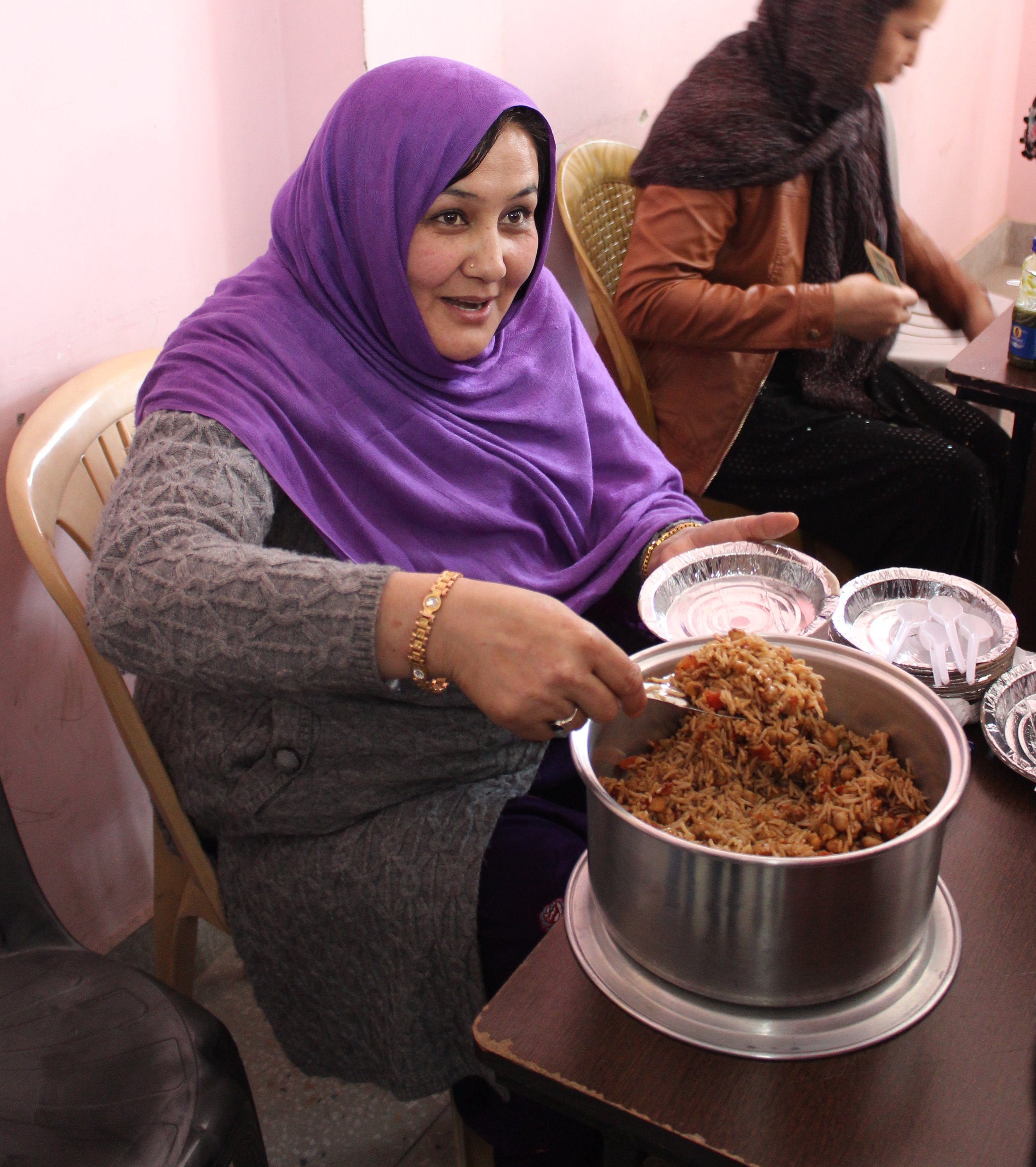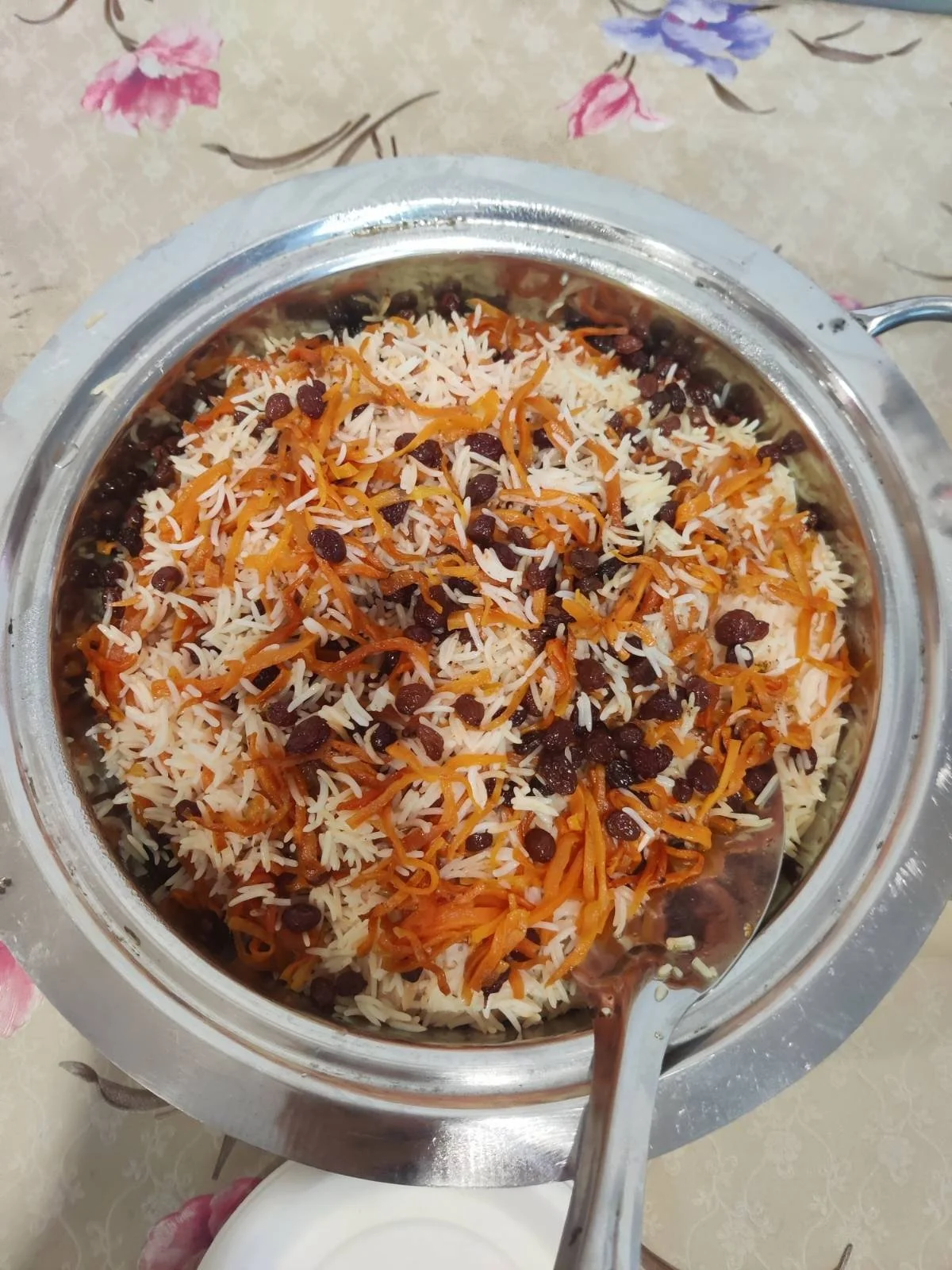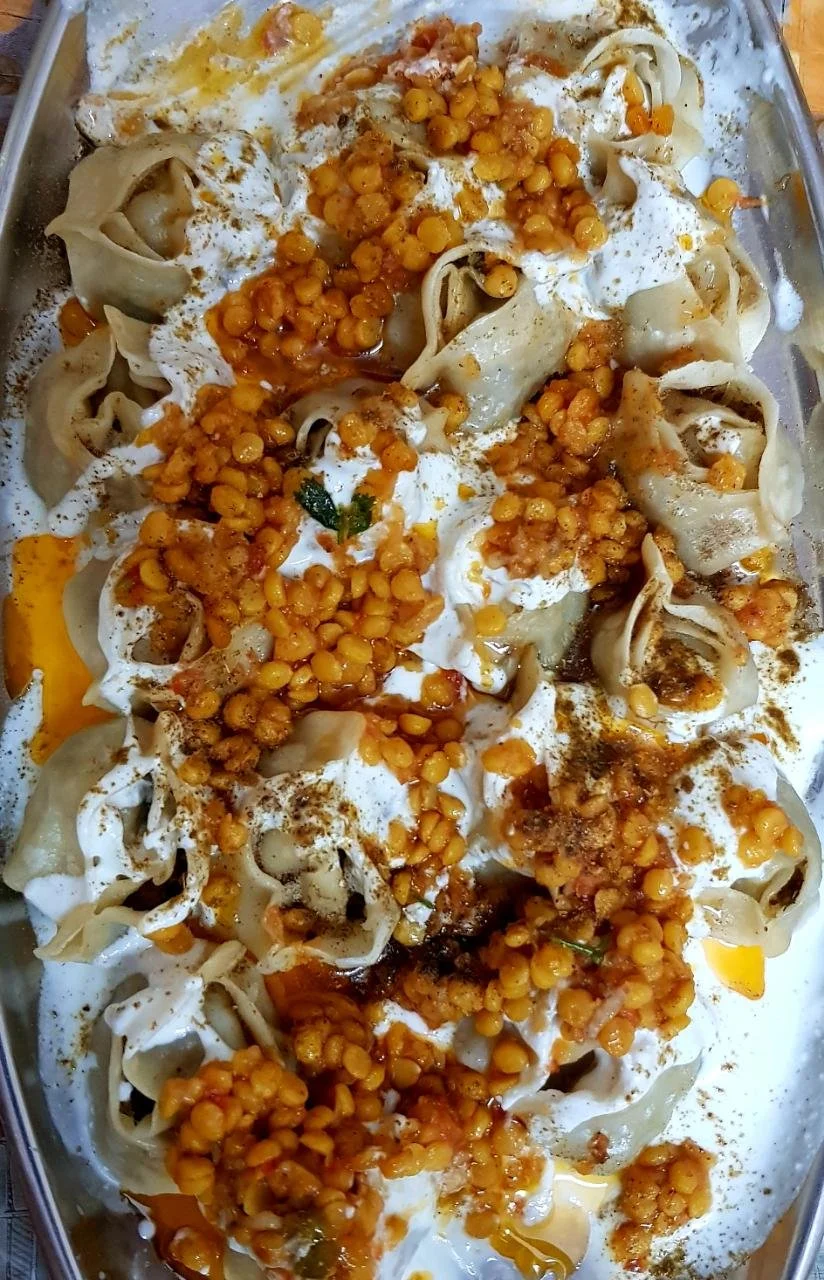Anasuya Goswami and Preesita Saloni | October 15, 2022
Dastane az Gheza wa Khatera ha
A Story of Food and Memory

India and Afghanistan share strong bonds grounded in the historical context and cultural exchanges between the people. Trade, for instance, forged strong ties between the two countries, dating to as far back as the Harappan period. Further, much before Afghanistan became engulfed in the narrative of a never-ending humanitarian tragedy, it was the birthplace of Tagore's eponymous Kabuliwallah-- a tall, bearded and proud Pathani dry-fruit seller who befriends a young girl from Kolkata.
Years later, families displaced by the decades of violence in their country have established a Little Afghanistan in India showcasing its rich cuisine and culture. Food, in particular, forms an important symbolic marker in this process of homing, where the preparation of dishes and mealtime routines from a person’s homeland are daily, tangible, yet ephemeral expressions of maintaining their roots.
Afghani cuisine quintessentially includes Qabuli, Naan/ bread, dry fruits, meat, and vegetables like aubergine and tomato, In spite of being displaced, Afghans carry their culture through their food wherever they go. Each dish tells a story that is embedded in their rich history.
Razia (name changed), presents a good example of this.
Born in Tashqurghan, in northern Afghanistan, Razia is a refugee living in New Delhi. For this mother of three, the memories of her own childhood are awash with the scent of fresh olives, qabuli and warm bread. She recalls how her family would rear young sheep in the spring, and how her mother would cook the lamb meat, cut into pieces “not too big, not too small", in sesame oil. The meat would then be put in an earthenware jar, called the kozai safali, and lovingly covered with a soft fabric that would keep it warm until it was ready to eat.
On her return from school young Razia would be greeted with the smell of warm naan cooked in the clay oven [tanor]. The fresh bread paired with the lamb meat [gosht gosfande surkh shuda] would taste, Razia reminisces, "heavenly". Razia's children, growing up in India, also associate the food of Tashqurgan with their late bibijaan [grandmother].
For Afghans, their cuisine is part of their identity and lifestyle, one which they have striven to preserve with their whole heart. The diaspora has taken up the responsibility to pass this rich heritage on to the younger generation, to prevent it from fading away in the foreign lands; a heritage which includes art, embroidery, clothing and tapestry; reminiscent of their distant but dear homeland.
Qabuli (above left) is amongst the oldest and the most popular dishes in the world. It is much cherished, cooked in almost every household and in almost every province in the country, varying according to cultural specificities. Said to be the star of any dinner table, particularly at special occasions and weddings, the Qabuli is seen to be a mark of respect and an expression of warm hospitality.
The dish is made with steamed rice dish (pulao) mixed with carrots, raisins and meat (preferably lamb) While the rice and meat are cooked separately, the carrots are julienned and fried with raisins, almonds and pistachios. The broth (from the cooking of the meat) is caramelized with a hint of sugar. It is this carmelisation of the broth that gives the pulao its signature brown tint. Another important requirement of preparing a good Qabuli is that it needs to be simmered with patience on low heat for some time before it is served.
Another popular dish, found particularly in Northeast Afghanistan is the Khichry Qorot. Residents of Kapisa province consume this dish in cold, lazy winters to energize themselves. An exercise in community-building too, groups of people hunt birds for meat, and prepare fresh meat balls to eat along with the Khichry. This area is also known as the place of Shola-Khors which translates as ‘place where people eat Khichry’. It is an indispensable part of their winter tradition.
Other Afghan preparations include Manto (above right) and Ashak, a variety of dumplings loved by Afghans.
The richness of the food, however, cannot be enjoyed without caution, particularly with a growing sedentary lifestyle so different from the one back home in Afghanistan. While conscious of her heritage and nurturing a strong desire to preserve Afghani food traditions, Razia remains vigilant of the high calorie content of Afghan meals. She wants her children to grow up familiar with the tastes and smells of Afghanistan, but at the same time, considers it important to calibrate the calorie content of their diet. Afghan cuisine, she explains, utilises plenty of rice, bread and red meat. Razia has replaced most of the bread with fruits and vegetables to come up with healthier alternatives. "Back in my days, we would get a lot of energy from the traditional Afghani meals, but that energy would be spent in physical labour like working in the fields; since we are now living in the city, and don't engage in very many physical activities, there should we a change in our eating habits," advises Razia. Thus, she crafts meals for her family, with equal amounts of traditional Afghani ingredients and techniques, love and "healthier alternatives suited to city living."
In Delhi, she appreciates the warm hospitality of her Indian neighbours, the Indian meals they share, and especially the use of grains and beans in Indian cuisine, "which make it very healthy", and which she has tried to incorporate in her own recipes. The occasional use of Indian spices and seasonings in Afghan cuisine is a literal manifestation of the symbolic melting pot that is Delhi.
Food forms an important part of Afghani identity, Razia claims, attesting to the truth in the Dari proverb, Mardom-e Afghan bashekamkarmekunan ('Afghans spend everything on their belly'). It is a matter of great pride for her that Afghans scattered around the world have managed to preserve and nurture their culture and cuisine. No matter the latitudes separating Razia from her childhood village in Tashqurghan, a proud and indomitable part of Afghanistan continues to rest in the modest meals she fondly prepares for her family in India.



